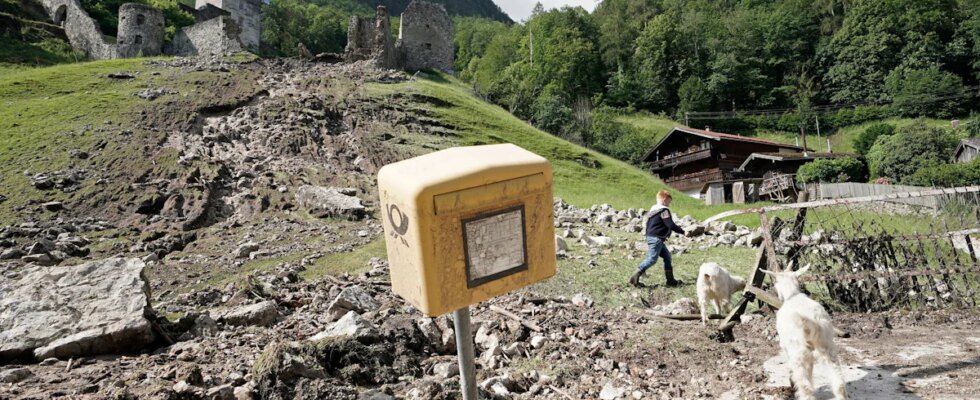Following the landslide at Falkenstein Castle in Flintsbach, Upper Bavaria, safety measures are now being taken to secure the remains of the castle ruins. The situation on the site is currently largely stable, the Rosenheim district office announced on Thursday. A specialist company from Tyrol is being used to secure the slope, and the rock will be secured with nets, among other things.
The remains of the walls at the castle are also being secured. Some of them are of archaeological importance. A temporary drainage system will be installed in the castle courtyard to divert any precipitation past the edge of the collapse. This work will be carried out by a local earthmoving company. Expert volunteers will also inspect the rubble field to secure any possible finds.
According to the district office, the extent of the damage cannot yet be quantified. The castle ruins were significantly damaged by the persistent heavy rain. A structural engineer and an architect inspected the damage to the partially collapsed castle on Tuesday; on Wednesday a geologist examined the subsoil. An initial investigation showed that the castle wall was not destroyed by a mudslide. Instead, falling water masses are said to have pushed down a significant part of the castle wall and washed it down the slope.
50 residents were initially brought to safety below the castle. The castle ruins, not far from the motorway on the border with Austria, are a hiking destination. According to the Chiemsee-Alpenland tourism association, the main castle, Falkenstein, was built around 1300. The outer castle was built in the 15th and 16th centuries. After an extensive expansion phase in the 16th and 17th centuries, the complex was reduced to ruins by fire towards the end of the 18th century. It is part of the Petersberg monument complex with the Romanesque St. Peter’s Church and the associated sacristan’s house.
According to the district office, Falkenstein Castle was extensively renovated between 2016 and 2019 for around one million euros. Now there are to be talks with the State Office for Monument Preservation about how to proceed.

